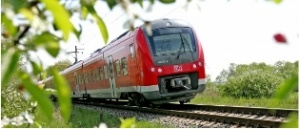Alstom to supply 28 Coradia Continental regional trains to Deutsche Bahn

Alstom Transport will manufacture 28 Coradia Continental regional trains for the German operator Deutsche Bahn Regio NRW GmbH. The contract is worth approximately €140 million. This is the first stage of the frame contract signed in 2011 with DB Regio for the delivery of up to 400 trains.
The trains will run on the Rhine-Ruhr transport network in North Rhine-Westphalia (NRW). They will enter service for DB Regio NRW GmbH in 2014.The Coradia Continental trains will be manufactured at the Alstom Salzgitter site in Germany, where a high level of experience is guaranteed: 141 trains of the same type have already been built there.
“We are glad that Deutsche Bahn has selected our modern and reliable trains. Our concept of the Coradia Continental offers high flexibility for our customers and maximal comfort for passengers. We are delighted to be contributing to the further development of transport services in North Rhine-Westphalia”, said Dr. Martin Lange, Alstom Transport Managing Director in Germany.
The Coradia Continental trains can run at maximum speed of 160 km/h with an excellent acceleration rate. With a capacity of up to 170 seats and 173 standing places for passengers, these trains can use double and triple traction regimes. DB Regio intends to use them for the S5 and S8 suburban tramlines from Dortmund to Mönchengladbach.
Eco-friendly technologies have also been implemented. Regenerative brakes allow the braking energy to be recovered – up to 30% can be fed back into the electrical power network. Due to the utilisation of the latest crash components, the trains meet highest levels of safety and already comply with the EN 15227 norm which will become compulsory in Europe from 2013 onwards.
ADVERTISEMENT
The trains have been adapted according to specific wishes of the customer. For the first time on this railway lines toilets will be fitted for disabled passengers. Modifications for people with reduced mobility and visual impairments have also been made: audio cues, side handrails, signage and electric lighting to improve spatial awareness. Multifunctional areas for wheelchairs, bicycles and baby carriages, as well as surveillance cameras inside each car, will ensure passenger comfort and safety. Wide central aisles facilitate movement inside and between the cars, since the driving gear equipment has been moved to the roof. A sliding step can be used to seal the gap between the platform and the car, thus ensuring safe boarding and alighting for passengers.

